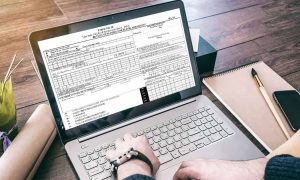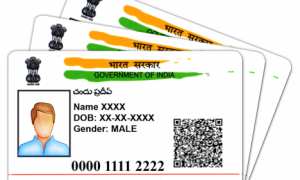Federal Bank has introduced SmilePay, a new payment method that enables customers to conduct transactions simply by using facial recognition. This eliminates the necessity for physical payment tools such as cards or mobile phones.
What is SmilePay
Federal Bank stated in a press release issued on August 29, 2024, that SmilePay is the first-of-its-kind payment solution in India, utilizing advanced facial authentication technology built on the UIDAI’s Bhim Aadhaar Pay.
SmilePay enables users to make payments simply by scanning their faces. This facility allows customers to pay for services from merchants without the need for physical payment instruments like cards or mobile phones. The entire transaction process is completed in just two steps.
“The concept of moving from cash to cards to QR codes to wearables, and now just a smile to pay, is an exciting Customer Experience in the making,” said Indraneel Pandit, CDO, Federal Bank.
Key Features and Benefits of SmilePay
Here are the key features of SmilePay, as per the Federal Bank press release.
- Convenience: Customers can complete transactions without the need to carry cash, cards, or mobile devices.
- Enhanced Merchant Efficiency: Facilitates effective crowd management and seamless transaction processing at counters.
- Robust Security: Powered by the secure UIDAI face authentication service, ensuring safe and reliable transactions.
- User-Friendly: A simple, intuitive interface requiring only a facial scan to complete a purchase.
Read More: 5 Key Financial Deadlines On Aadhaar Update, Credit Card, Airfare To Impact You From September
Availability and Future Expansion
According to the Federal Bank press release, “SmilePay™ will initially be available exclusively to Federal Bank customers, requiring both merchants and customers to have accounts with the Bank. Federal Bank plans to extend the service and explore strategic partnerships to broaden its reach in the near future.”
First pilots were implemented for their clients at specific branches and outlets in collaboration with Reliance Retail and Svatantra Micro Finance.
How to make payments using SmilePay
Making Payments
“Customers visiting federal bank merchants having FED MERCHANT application in their mobile simply choose SmilePay as their payment method at the checkout.
Merchant initiates the payment via FED MERCHANT APP by entering the customer Aadhaar number. Camera in merchant’s mobile scans the customers face, verifying their identity against the stored facial data in UIDAI system. Once verified, the payment is processed instantly, debiting the customers Aadhaar seeded account and crediting the merchant account maintained with federal bank.On successful payment a voice alert is generated by the FED MERCHANT APP informing merchant about the completion of the transaction,” according to the Federal Bank website.
Read More: Bank holiday in September 2024: Banks to Remain Closed For 15 Days; State-Wise Holiday List Here
What is the limit on SmilePay
The standard limits for Aadhaar-enabled Payment System (AePS) and BHIM Aadhaar Pay services collectively are Rs 5,000 per transaction and Rs 50,000 per customer monthly.
How SmilePay works
According to the Federal Bank website, “SmilePay utilizes the BHIM Aadhaar Pay platform powered by NPCI to enable seamless, biometric-based payments between customers and merchants (P2M). This service can be availed by federal bank merchants via bank’s merchant app named FED MERCHANT. The application allows merchants to receive digital payments from customers over the counter via Aadhaar authentication and face recognition. It enables the merchant of FBL to accept payments from customers of any bank (certified with face authentication modality with NPCI) by authenticating the customer’s facial biometrics.
Additionally, the merchant’s Aadhaar must be linked to their bank account. At the customer’s end, they must have a valid bank account seeded with Aadhaar and sufficient balance to complete a successful transaction. We are also working on the additional features to enhance the user experience on both ONUS and OFFUS front of the application.”





































